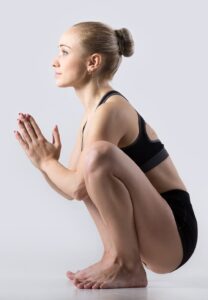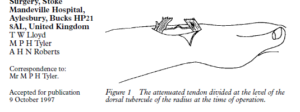A few months back, I reread Tom Wintringham's “New Ways of War”. Much of it is still relevant today and recommended for anyone interested in military matters.
On one page, Wintringham opinions that parade drill is only good for teaching men how to stand around. Elsewhere, he suggests that one of the first skills a man be taught is how to take cover.
Thinking about this reminded me of the “poppa-san squat”, more commonly called the Asian squat (or hunker).
“But sometimes, there were no filled and unoccupied sandbag seats available, and for some reason, you did not have your steel pot with you in the NDP or FSB, and wanted to sit down, there was the ultimate GI expression of becoming as one with the RVN environment: the Poppa-san Squat! Also known as going Asiatic to the guys from WWII and Korea.
“To do the Poppa-san Squat, a soldier, just folded up in a sitting/squatting position, with his skinny butt touching the heels of his jungle / combat boots, leaning forward with arms on knees or at the dangle (see pictures of the RVN civilians sitting this way). Once accustomed to doing so, a body could sit like this for prolonged periods of time without discomfort, but no GI could remain in this position as long as a Vietnamese!!! With practice, you could really get comfortable, and simply by pulling down the trousers, it was possible to take a dump in this pose (that is why the RVN copies of those famous old French toilets had footpads inside the bowl!). Be advised that one must be slender and fit to do the Poppa-San Squat without causing damage to muscles and tendons!

“You see, most of the RVN peasantry did not own furniture other than a crude platform bed, and a maybe a table, so that is how they sat for social occasions in the vill, and even the poor folks in some of the big cities too.
“Again this method of sitting has caused many weird looks from wives, girlfriends, family members, passersby, and soldiers who never served in combat in the Pacific, Burma, Korea, RVN, etc. The presence of obvious furniture is again often overlooked, and i even squatted down next to my footlocker in the barracks like this several times, to polish footwear, in spite of the big OD footlocker at the foot of my bunk – this is the Stateside, European or garrison soldier's lounge chair in the barracks environment).[sic]
“It used to drive the lifers wild Stateside and in Europe to see lines of GIs (for whatever reason there was a line waiting) with the RVN vets hunkered down in the Poppa-san Squat instead of standing tall! Not proper soldiers! Bad image! Etc, etc!”
If a unit halts, it makes sense for the majority of the men to drop down. Two men observed standing in a field might be farmers. A dozen men standing in a field are probably not!
Squatting rather than sitting also protects you from the cold, wet or hot ground surface.
In this document is the passage: “You are less visible from the air if you: do not move; in the shadow of buildings (objects); you sit instead of lie down (reduce.your size); you match the color of your uniform with the terrain, that is, you don’t fuss and don't “glow.””
Viewed from above, a “lump” is less recognizable as a human than a prone figure.

The above passage rather reminded me of the ninja technique of “uzura gakure”: “In the darkness the ninja rolls his body into a ball giving the appearance of a stone and remains motionless on the landscape.” (Comprehensive Asain Fighting Arts, p.125, Don F.Draeger and Robert W. Smith)
Some field manuals also suggest freezing in a crouched or prone position in response to airborne flares.
Elsewhere is the recommendation that squatting in a trench rather than lying gives a better chance of survival if the trench collapses.
There are clearly a number of applications for a soldier being able to squat!
One of the nonsenses sometimes voiced about the Asian squat is that only Asians can do it. Delta Mike's recollections above clearly disprove this. Squatting is also regarded as a Slav thing.
Being able to assume an Asian squat would be a useful ability for a young soldier. This is something that is easiest to learn while young and supple. It should probably be incorporated into basic training and its practice encouraged.
There are numerous webpages explaining how to perform the squat. One that I came across was actually intended for weight-lifters who wanted to improve their stance during squat lifts.
The technique was to drop into a squat, feet flat on the floor, while having your hands on a solid object you could use to steady yourself. I use the edge of the bath. The video I saw suggested doing 30 seconds the first day, a minute the second, two minutes the day after and so on. I just do a minute, first thing in the morning.
I should explain here that time has not been kind to my legs, tendons and feet. I know from personal experience that it is possible to limp with both legs at once!
I had been given some stretching exercises to do, like those used by runners, but they did not help much.
To my surprise, I discovered that scrunching down into a squat was a far more effective exercise.
Hanging on to the edge of the bath was a pretty good exercise for the forearms, too.
I will never be able to effortlessly squat like some people can, but training for squats has its own benefits.
The squat is a great way to limber up. It's a good warm-up too. Every other morning I will follow the squat with a minute or so of dumbbell work, then straight into the shower.
Even if you don't want to learn the poppa-san, experiment with adding the squat to your exercises.










